🌟🎨 World Tourist Spot Series: Norway Edition 🎨🌟
🎨✨ Discover the breathtaking landscapes and iconic architecture of Norway through vibrant colors! ❄️✨ Let your creativity flow as you bring these stunning landmarks to life with your personal touch 🌈🎉
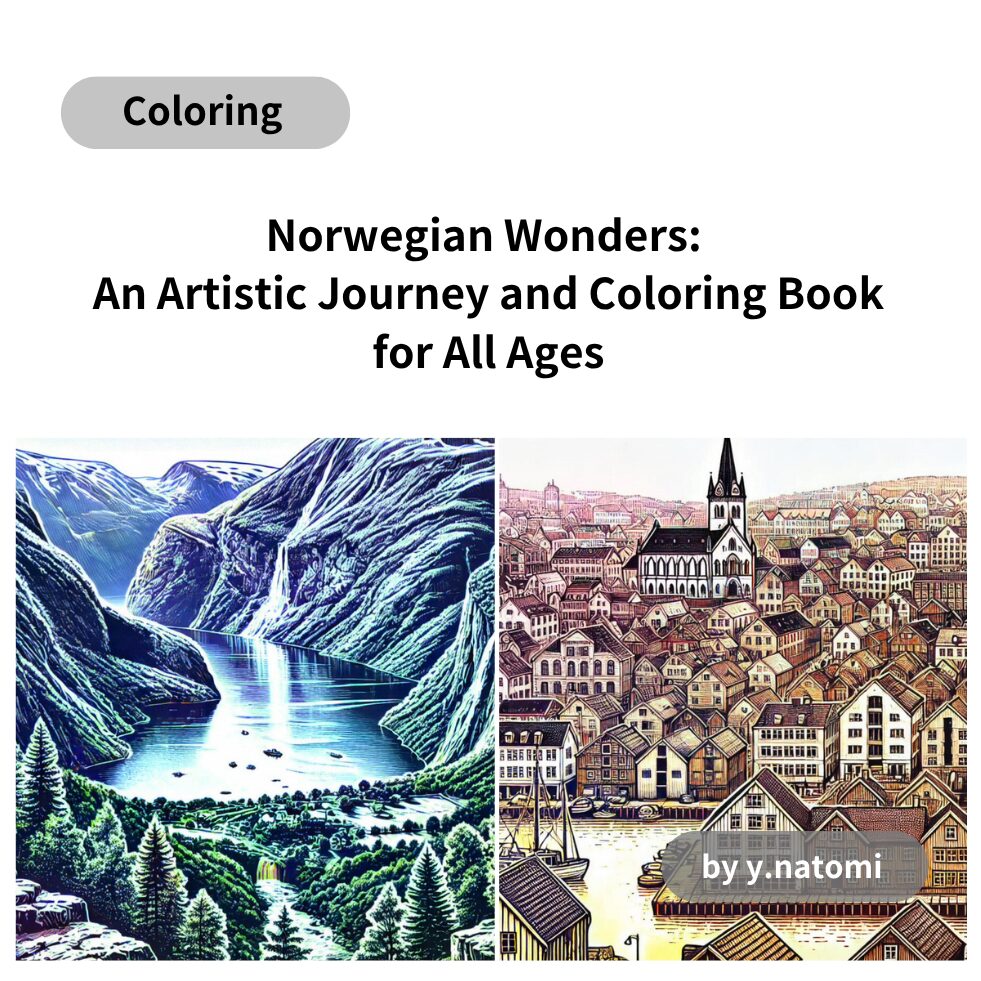
The coloring book consists of 98 pages (21 cm × 21 cm) in an open-flat format.
It features original coloring pages of 24 tourist spot themes, arranged in the following structure.
・Even-numbered pages feature bold-lined coloring bases.
・Odd-numbered pages feature light-lined coloring bases.
※ the back side of each page is left blank without any printing.
View the Amazon Book Page Here
Coloring Theme Table of Contents
| 1. Fjords | 11. Hardangerfjord | 21. Hanseatic Museum |
| 2. Oslo Opera House | 12. Norwegian Stave Churches | 22. The National Museum of Norway |
| 3. Bryggen Wharf | 13. Alta Rock Art | 23. Norwegian Lighthouses |
| 4. Norwegian Countryside | 14. Oslo City Hall | 24. Bergen Fish Market |
| 5. Northern Lights in Tromsø | 15. Flåm Railway | |
| 6. Lofoten Islands | 16. Stavanger Old Town | |
| 7. Svalbard Islands | 17. Tromsø Cathedral | |
| 8. Vigeland Sculpture Park | 18. Preikestolen (Pulpit Rock) | |
| 9. Geirangerfjord | 19. Sognefjord | |
| 10. Norwegian Glaciers | 20. Nordkapp (North Cape) |
Click here to view the "Norway Travel Guide" and "Highlights of Tourist Attractions."
If you want to see other coloring themes, go to ⇒ Theme Search Map.
Completed Coloring Sample
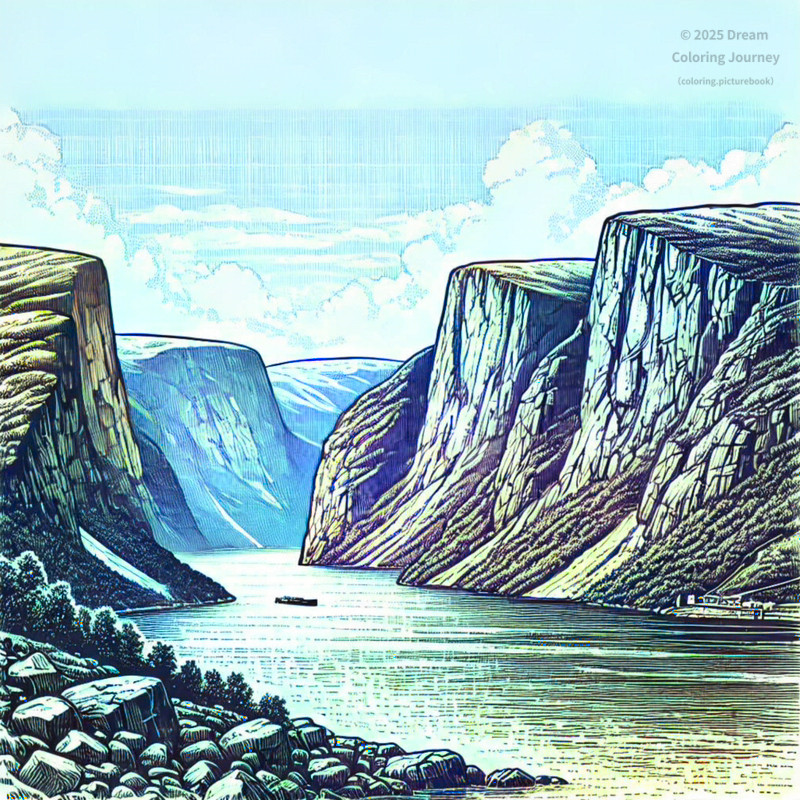

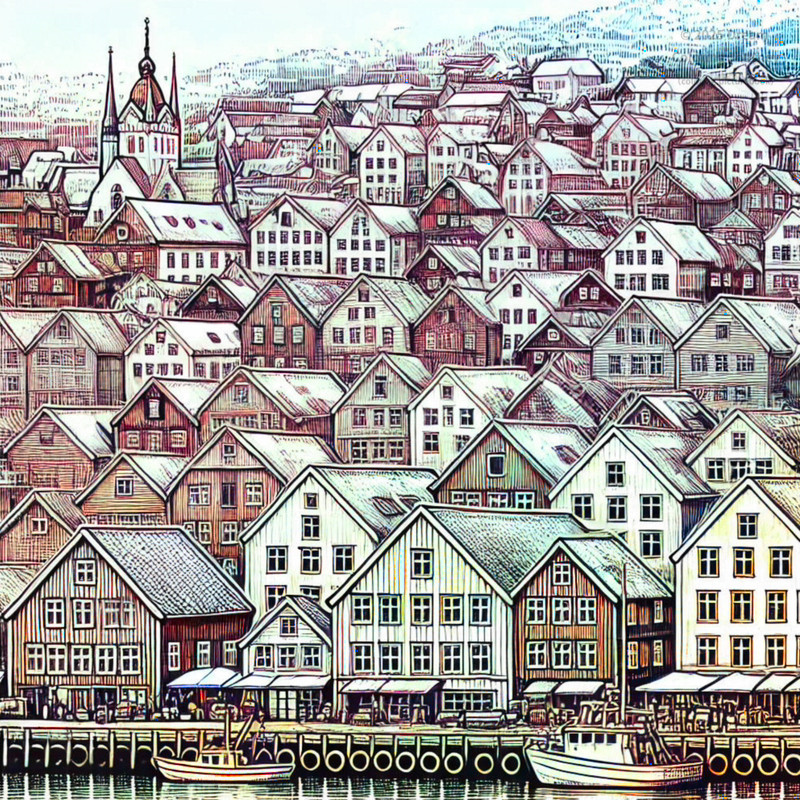
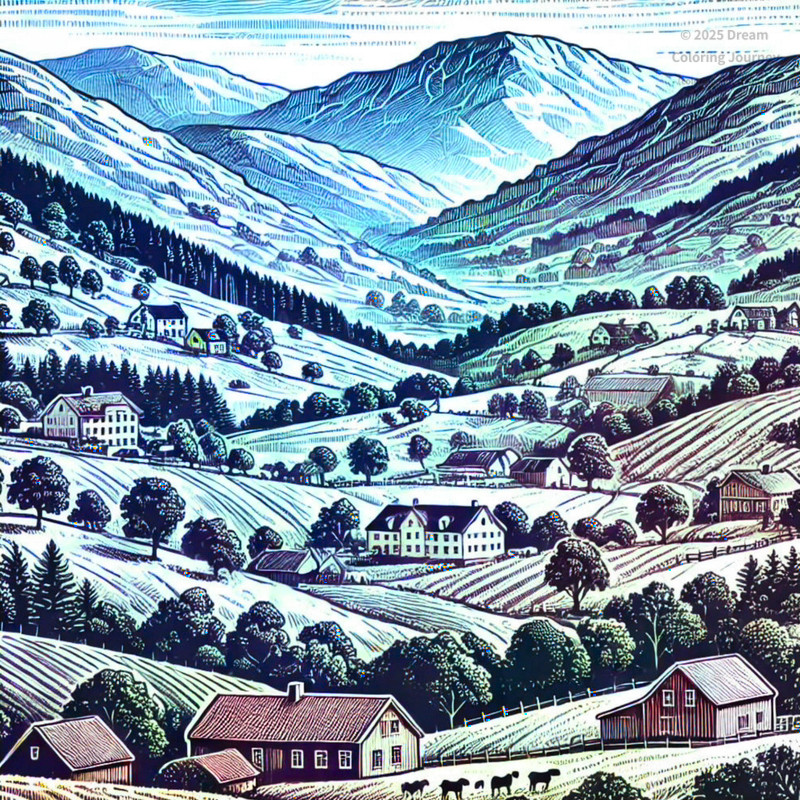

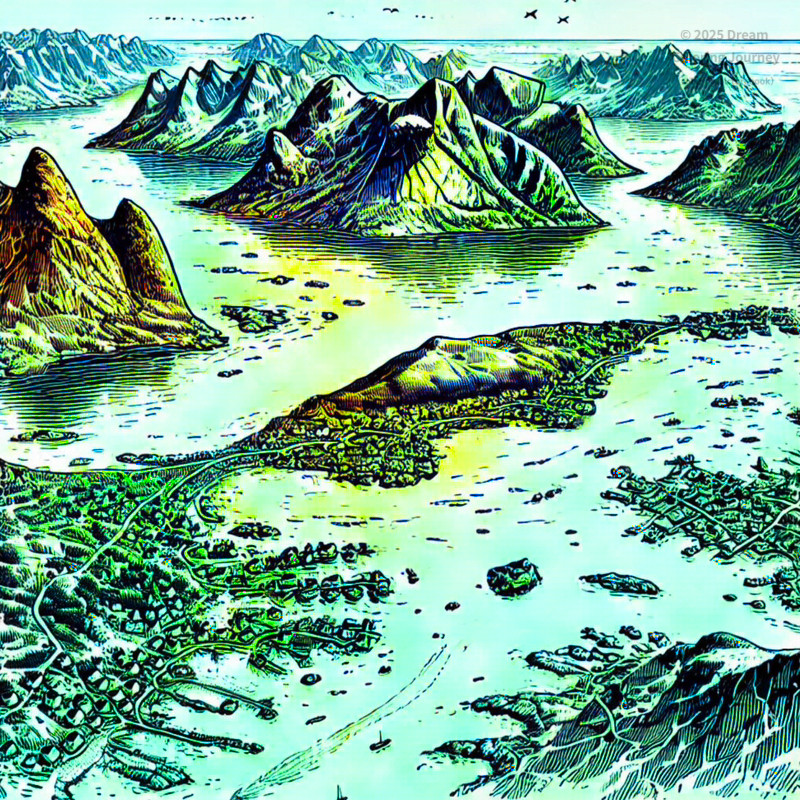
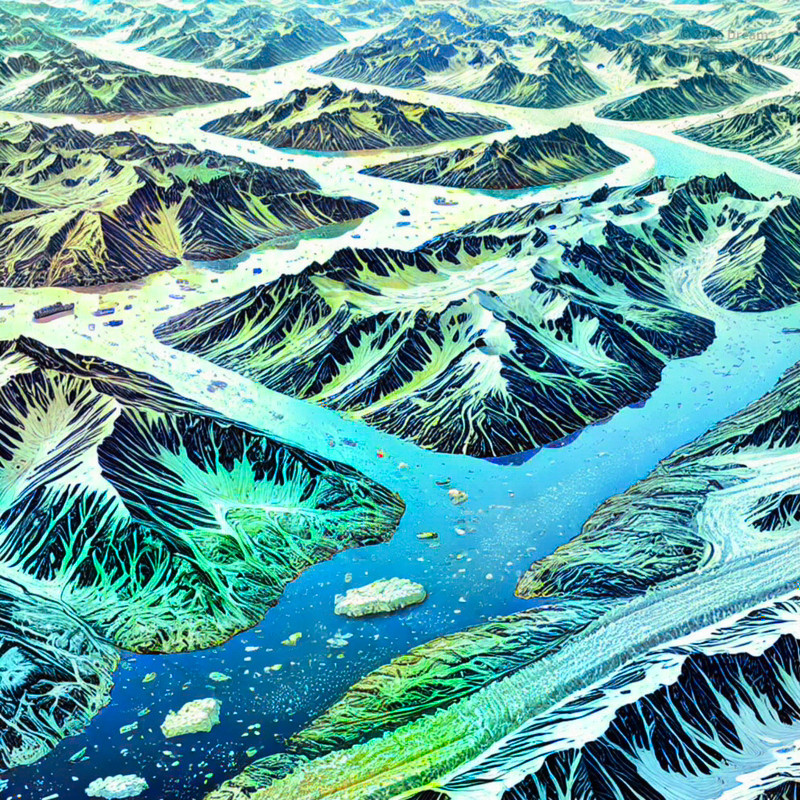
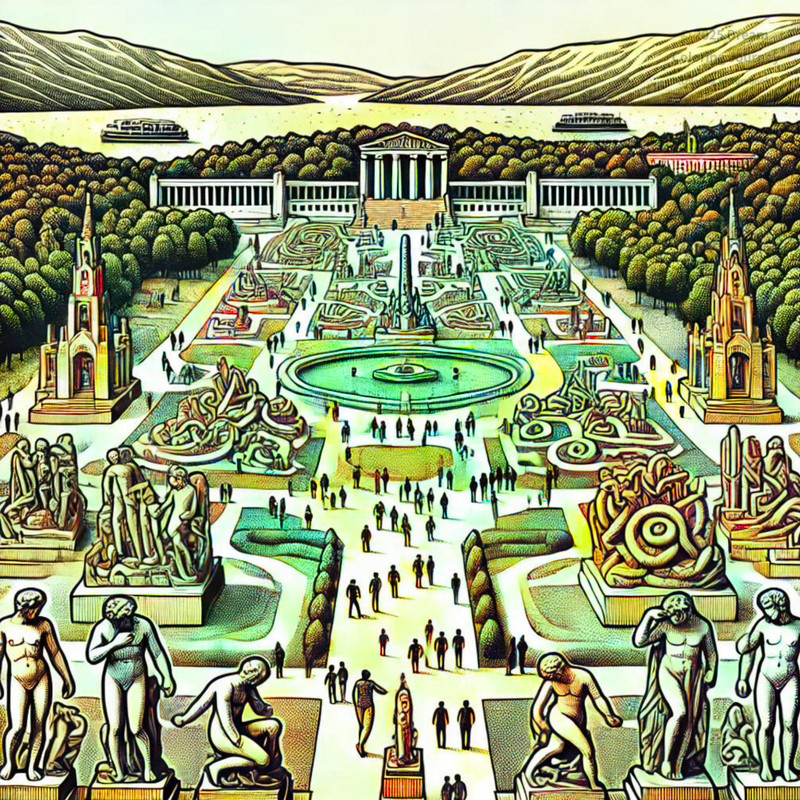
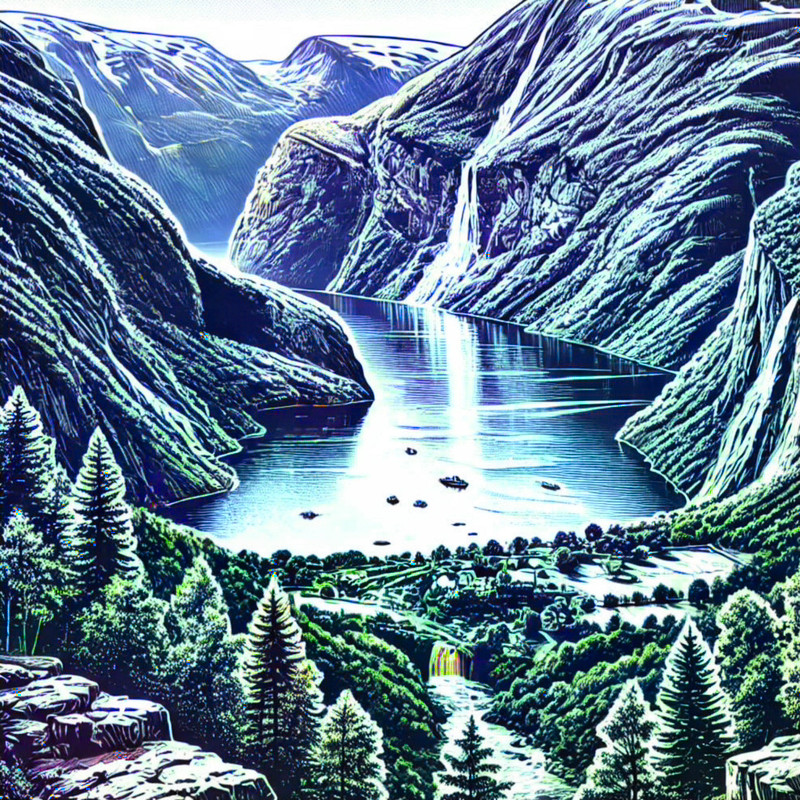
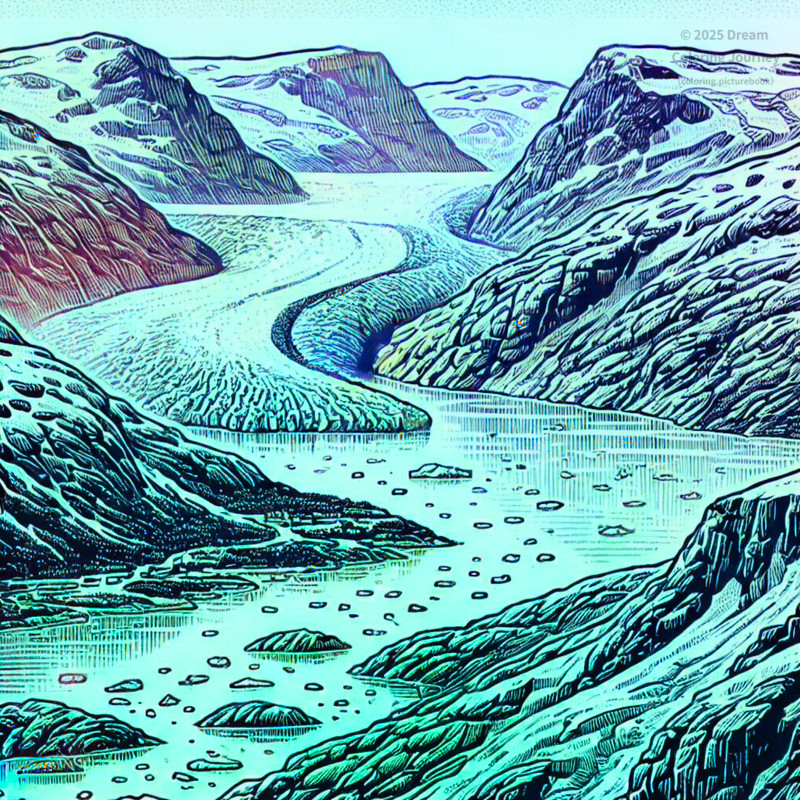
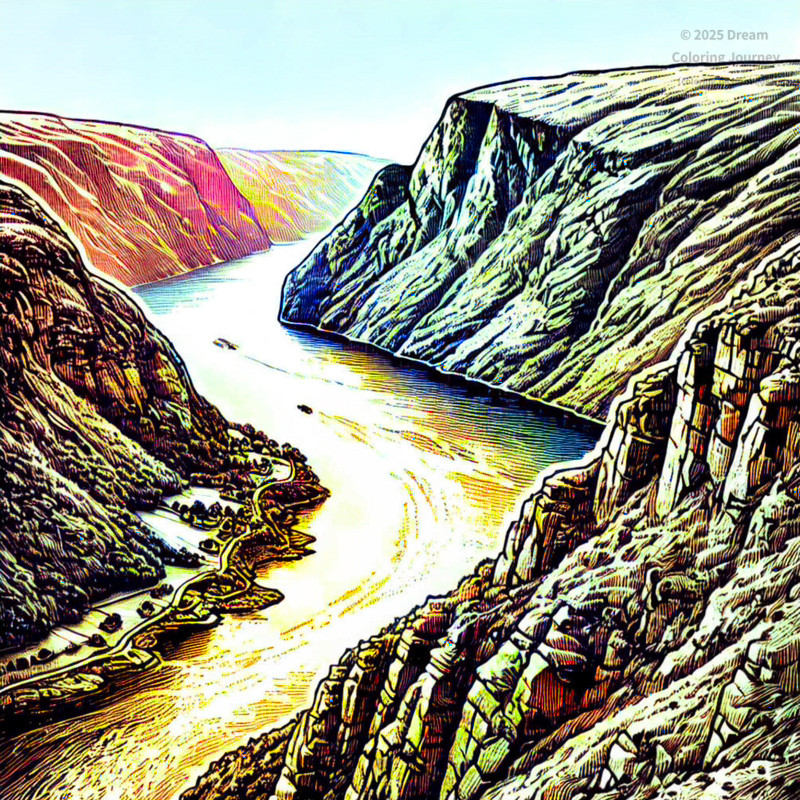
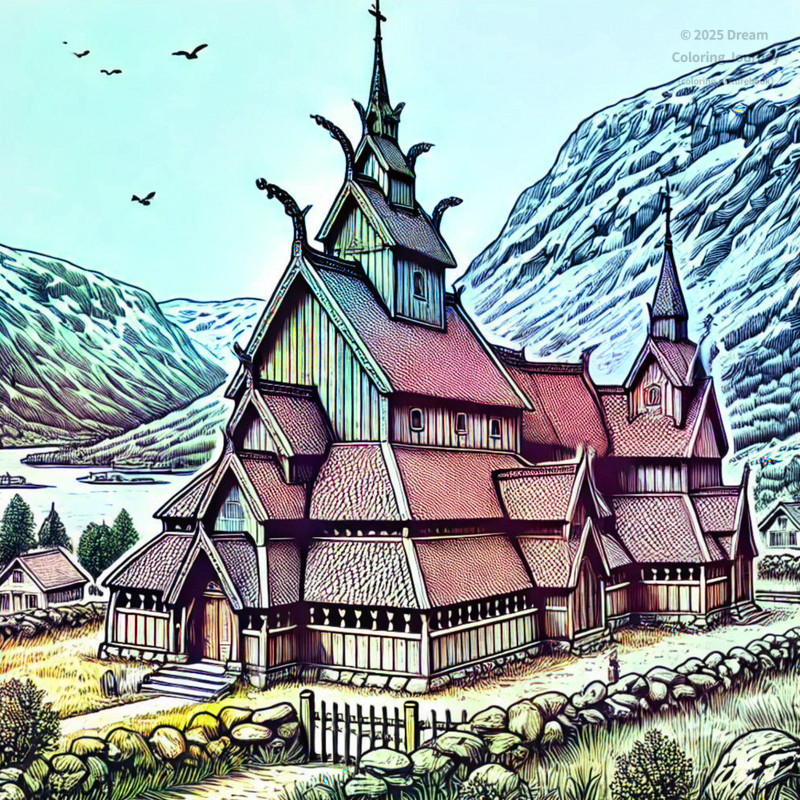

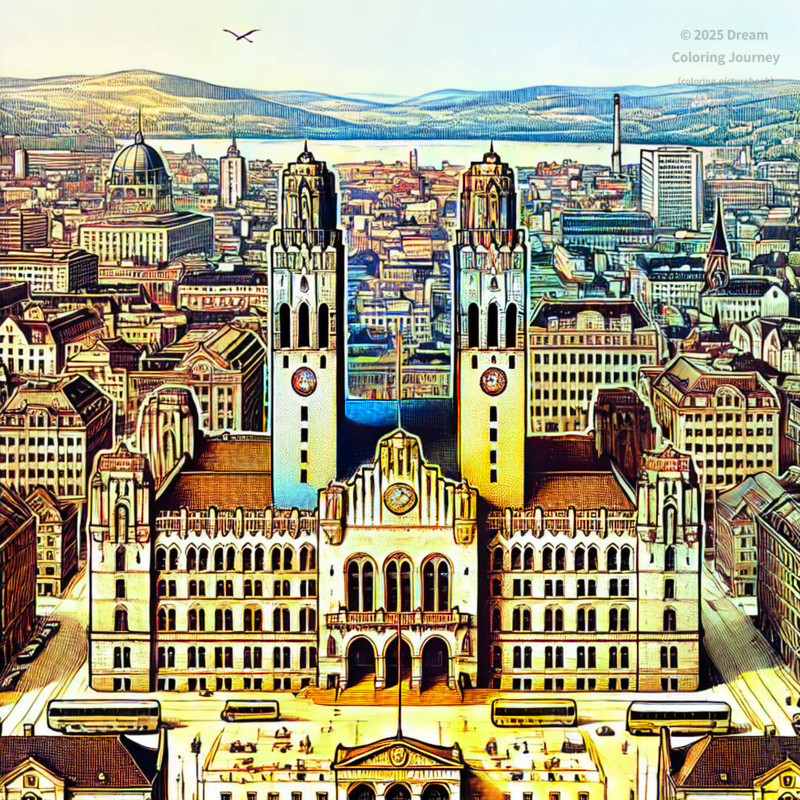
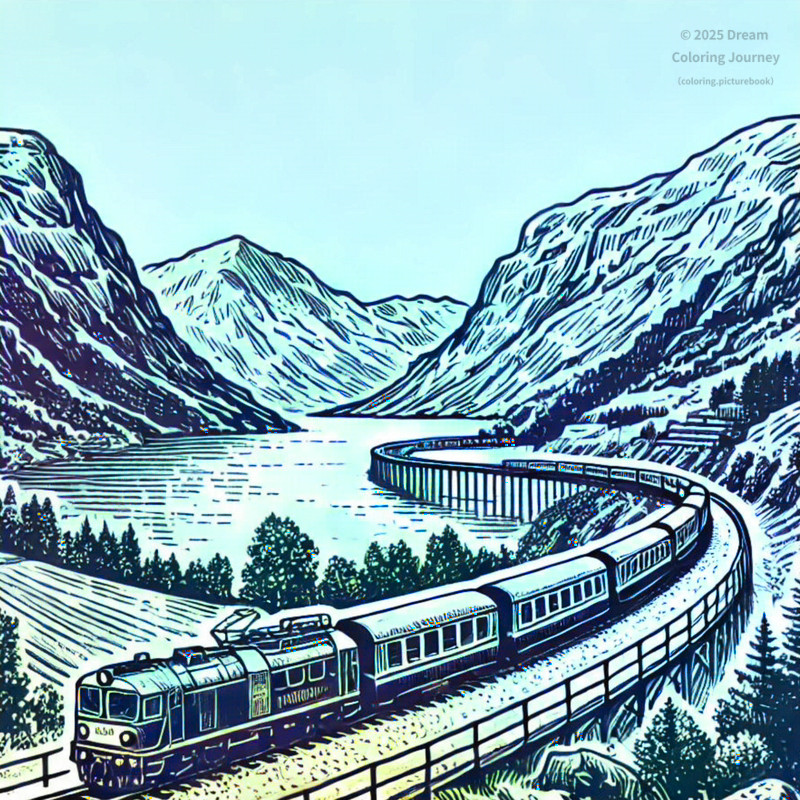
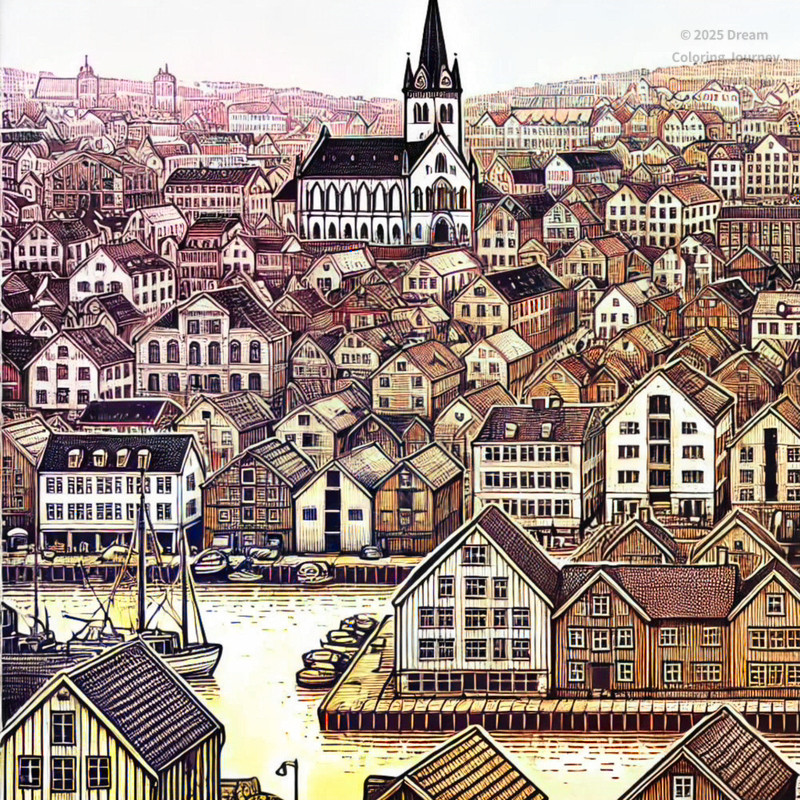
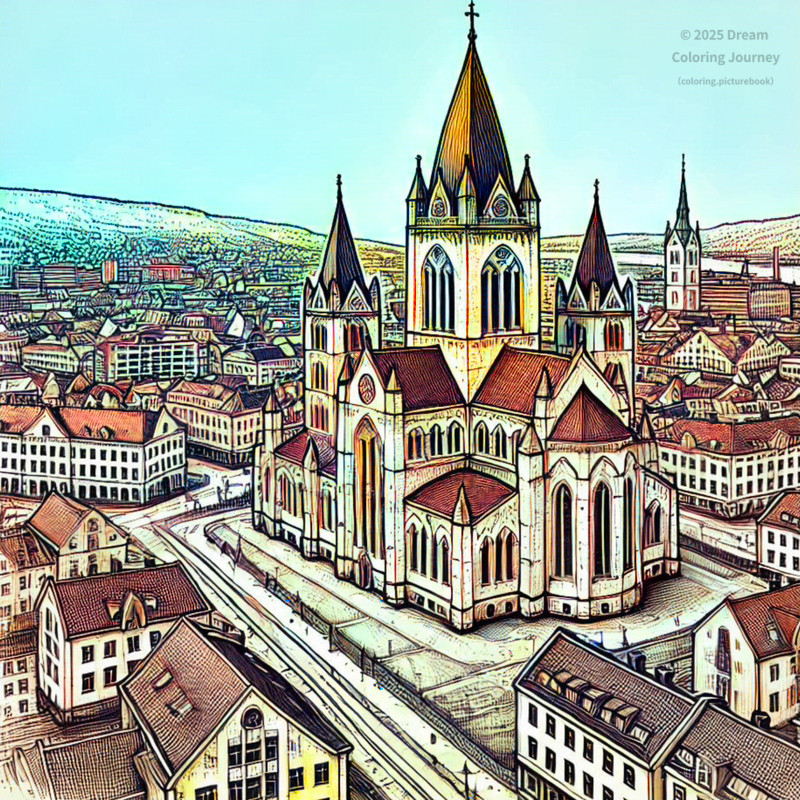
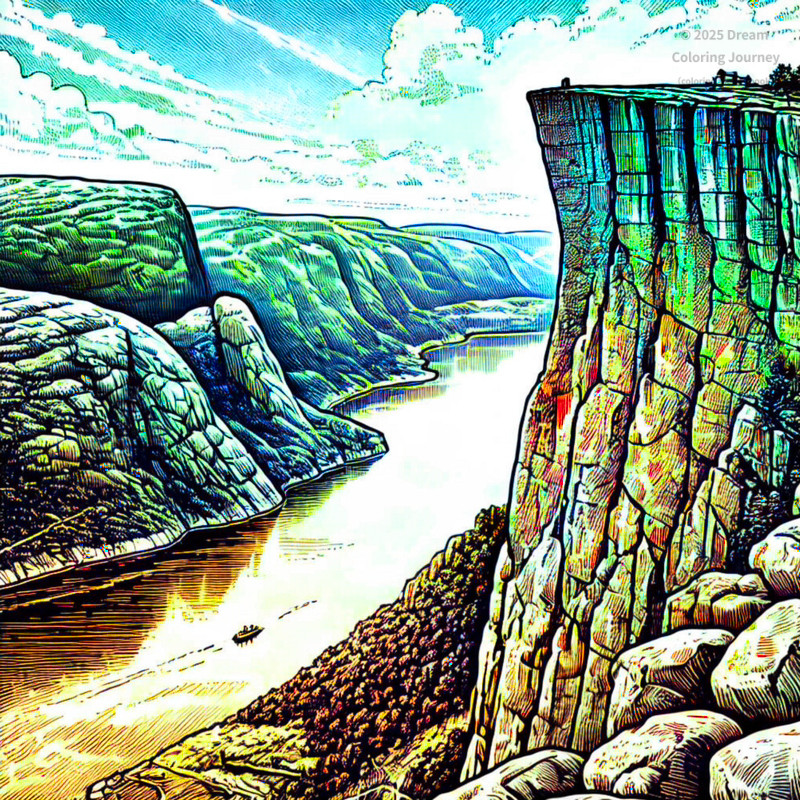
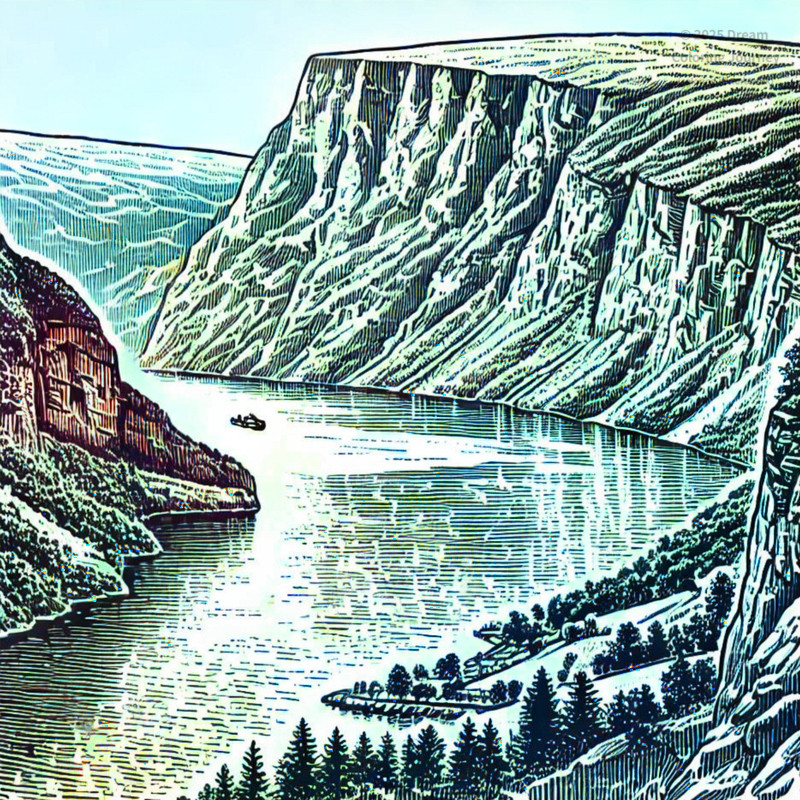
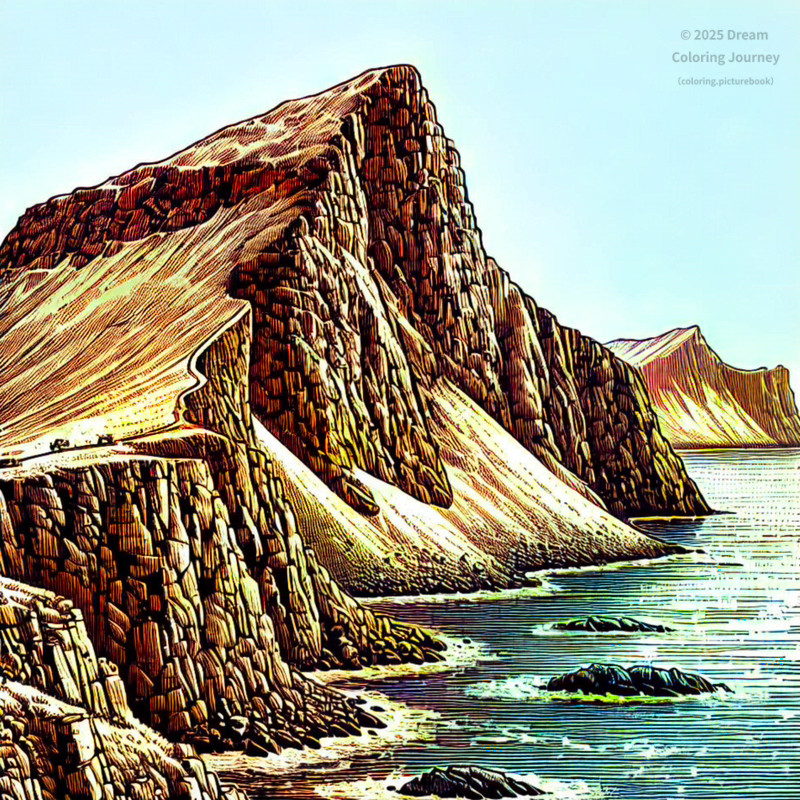
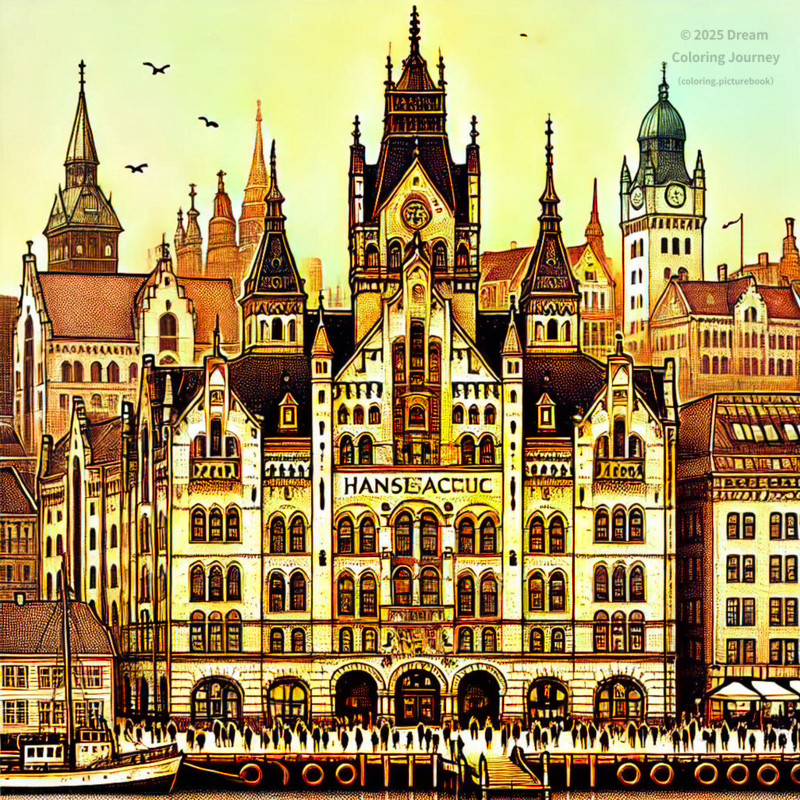
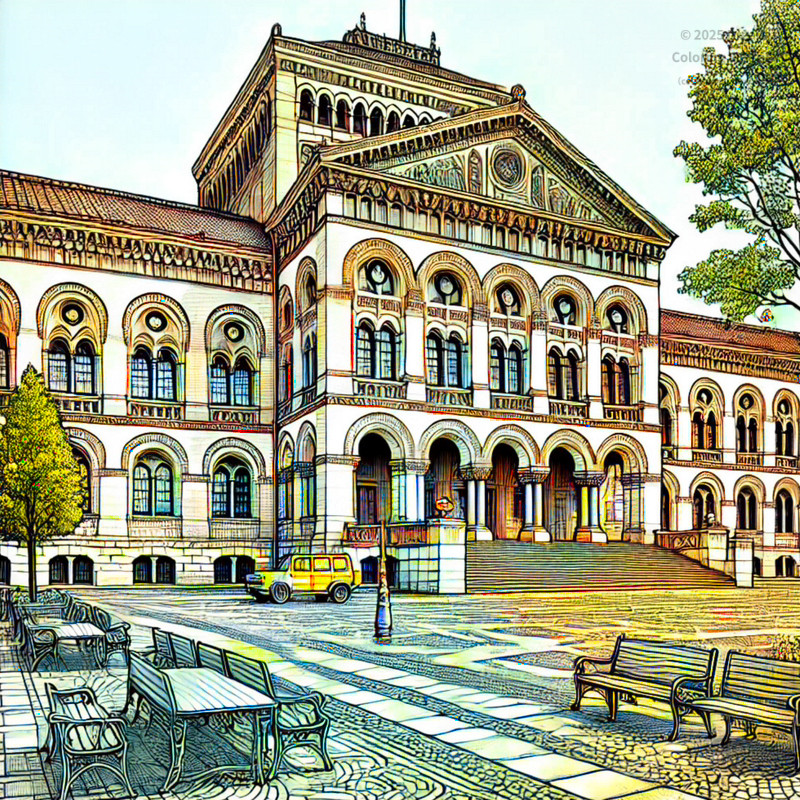
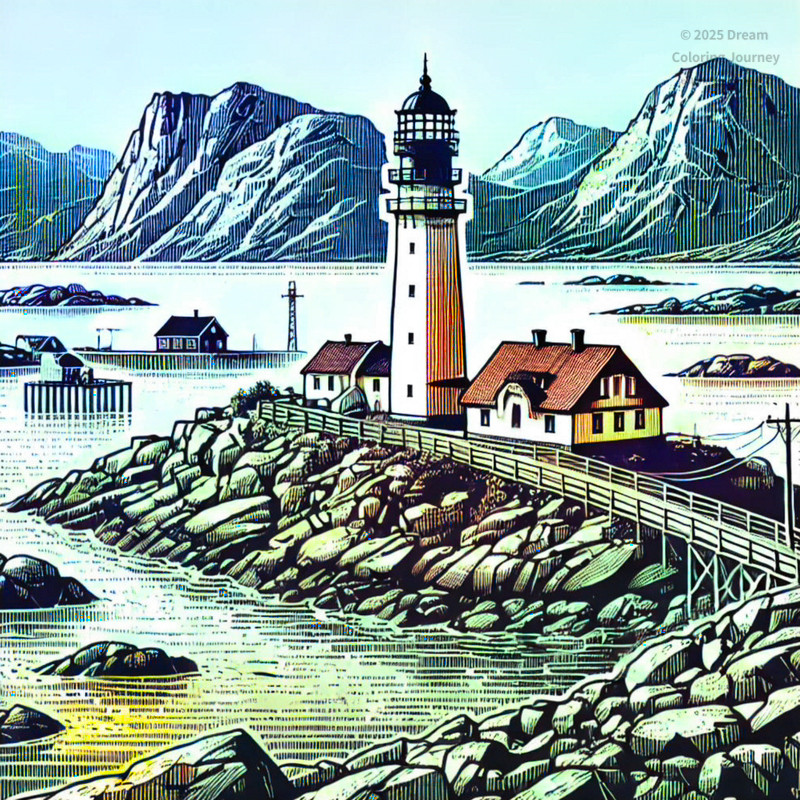
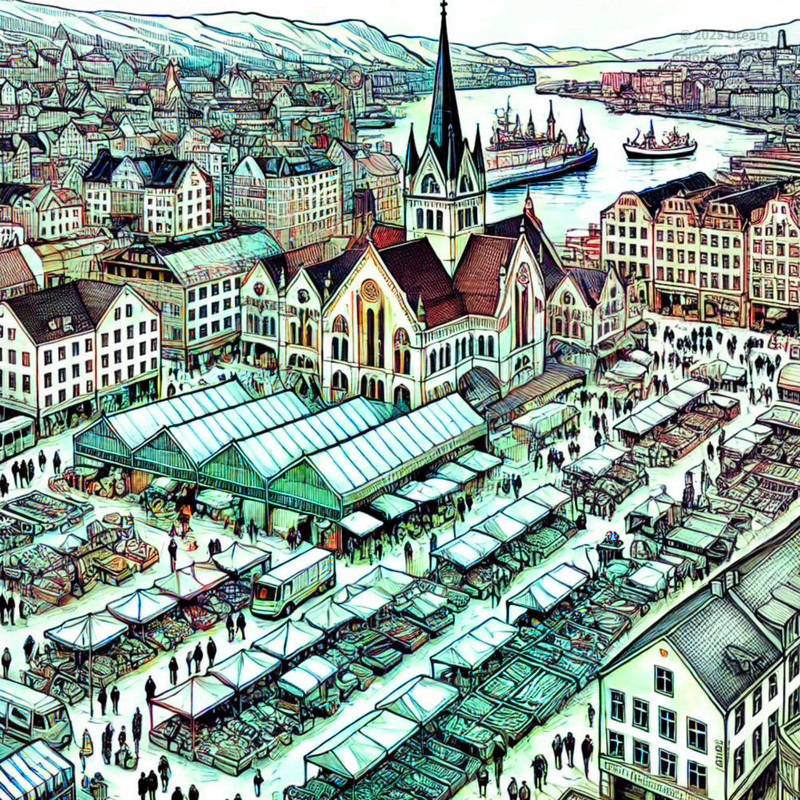
If you want to see other coloring themes, go to ⇒ Theme Search Map.
How to Purchase a Coloring Book
From the link below, you will be redirected to the Amazon Books site where you can purchase the corresponding paperback.
The book is printed in high-quality black-and-white for coloring and is available in English only.
Please refer to the "Coloring Page Sample" on this blog for inspiration, and enjoy coloring freely.

The coloring book consists of 98 pages (21 cm × 21 cm) in an open-flat format.
It features original coloring pages of 24 tourist spot themes, arranged in the following structure.
・Even-numbered pages feature bold-lined coloring bases.
・Odd-numbered pages feature light-lined coloring bases.
※ the back side of each page is left blank without any printing.
View the Amazon Book Page Here
✈️ Norway Travel Guide【Perfect for Beginners】
🗺 Country Overview
Norway, located in Northern Europe, is renowned for its stunning natural beauty—majestic fjords, the northern lights, and scenic hiking trails. The capital city, Oslo, blends modern urban comforts with easy access to nature. With excellent public safety and high English proficiency, Norway is an ideal destination for first-time travelers in Europe.
🌤 Climate & Best Time to Visit
Norway’s climate varies by region but is generally cool and temperate.
- Spring (April–May): Melting snow and increasing daylight hours
- Summer (June–August): Mild weather and midnight sun in the north—ideal for hiking and fjord cruises
- Autumn (September–October): Vivid fall foliage and fewer crowds
- Winter (November–March): Cold and snowy—perfect for northern lights viewing and winter sports
🟢 Recommended seasons:
June to August for outdoor activities, and October to March for those seeking the northern lights.
🚍 Transportation & Access
- Airports: Oslo Gardermoen Airport is the main international gateway. Other cities like Bergen and Tromsø also offer international flights.
- Railways: Long-distance trains are efficient and scenic—especially the Bergen Railway, known for its breathtaking views.
- Urban Transport: Major cities have well-developed tram, bus, and metro systems. The Ruter travel card offers unified access.
- Ferries: Along the coast, ferries are a common and scenic means of travel—especially for fjord cruise tours.
💰 Currency & Costs
- Currency: Norwegian Krone (NOK)
- Prices: Norway is among the most expensive countries in Europe, especially for dining out and alcohol. Consider saving money by shopping at supermarkets and preparing your own meals.
- Tipping: Tipping is not expected, but rounding up the bill is appreciated for excellent service.
🔐 Safety & Health
- Safety: Norway consistently ranks as one of the safest countries in the world. Solo and nighttime travel is generally secure.
- Cautions: Petty theft is rare but can happen in busy areas. In nature, weather can change quickly—check forecasts before outdoor activities.
- Healthcare: Medical services are high-quality, and English is commonly spoken in urban hospitals. Travel insurance is strongly recommended to cover any medical emergencies.
🗣 Language & Communication
- Official Language: Norwegian
- English Usage: English is widely spoken, especially among younger generations. Tourist areas and public facilities offer English signage and support.
📱 Wi-Fi & Connectivity
- Free Wi-Fi is available at most airports, hotels, cafés, and public spaces.
- SIM cards and eSIMs are available at airports, convenience stores, and mobile retailers. Mobile coverage is strong even in rural areas.
🌟Highlights of 24 Tourist Attractions
- Fjords (Western Norway)
Norway’s fjords, carved by glaciers over millions of years, offer breathtaking scenery of steep mountainsides, cascading waterfalls, and tranquil waters. The most famous include Geirangerfjord, Sognefjord, and Hardangerfjord, each with unique side arms and dramatic landscapes. Summer is the best season, with long days and vibrant greenery. Accessible by cruise, train, or car from cities like Bergen and Oslo. Plan for a half-day to full-day visit. Best photo spots are from cruise decks or panoramic viewpoints overlooking the fjords. - Oslo Opera House (Oslo city center)
Located on the waterfront in Bjørvika, the Oslo Opera House is a modern architectural icon resembling an iceberg rising from the fjord. Opened in 2008 and designed by Snøhetta, it features a marble and glass façade and a publicly accessible roof with panoramic views of Oslo and the Oslofjord. Best visited in spring to autumn. Easily reached on foot from Oslo Central Station (about 4 minutes). Allow 1–2 hours. The rooftop offers the best photo opportunities. - Bryggen Wharf (Bergen city center)
Bryggen Wharf, a UNESCO World Heritage site, is renowned for its colorful wooden buildings lining Bergen’s old merchant quarter. Dating back to the Hanseatic era, it showcases the city’s trading history and vibrant culture. Summer is the liveliest season. Reachable on foot from Bergen Station. Plan for 1–2 hours. The wharf’s façade and nearby harbor provide excellent photo angles. - Norwegian Countryside (Various regions)
The Norwegian countryside features lush meadows, red barns, and grazing livestock, offering a glimpse into traditional rural life. Its charm lies in the peaceful landscapes and preserved farming culture. Spring and summer are best for vibrant scenery. Reachable by car or train from major cities. Spend 2–3 hours exploring. Early morning or sunset provides the most picturesque light for photography. - Northern Lights in Tromsø (Tromsø city)
Tromsø, above the Arctic Circle, is a premier spot for viewing the Northern Lights from November to March. The city’s location and minimal light pollution make it ideal for aurora sightings. The phenomenon is best viewed under clear, dark skies with minimal light pollution. Accessible by flight from Oslo; tours depart from Tromsø city center. Plan for a half-day to full-night excursion. Capture the aurora with snowy landscapes for stunning photos. - Lofoten Islands (Northern Norway)
The Lofoten Islands boast dramatic peaks, deep fjords, and charming fishing villages. Known for their natural beauty and traditional red fishermen’s cabins, they offer midnight sun in summer and auroras in winter. Summer is ideal for hiking and sightseeing. Accessible by ferry or flight from Bodø. Allow at least one full day; ideally, plan an overnight stay.
The contrast between sea, mountains, and villages is perfect for photography. - Svalbard Islands (Arctic Ocean)
Svalbard, in the Arctic Ocean, offers untouched wilderness, polar bears, and unique arctic landscapes. The islands have a rich polar exploration history. Visit in summer for midnight sun or winter for polar night experiences. Flights connect Svalbard with Oslo. Plan for at least a day. Capture glaciers, wildlife, and vast tundra for memorable photos. - Vigeland Sculpture Park (Oslo, Frogner Park)
Located in Frogner Park, Vigeland Sculpture Park features over 200 sculptures by Gustav Vigeland, depicting the human experience. The park is open year-round, but spring and summer offer lush surroundings. Reachable by tram from Oslo city center in about 15 minutes. Spend 1–2 hours. The Monolith and central fountain are top photo spots. - Geirangerfjord (Geiranger village, Western Norway)
A UNESCO World Heritage site, Geirangerfjord is famed for its steep cliffs, waterfalls, and deep blue waters. Its dramatic scenery is best experienced by boat or from panoramic viewpoints. Visit in summer for cruises and hiking. Accessible by bus and ferry from Ålesund or Oslo. Plan for half a day to a full day. The Ørnesvingen viewpoint offers iconic photo opportunities. - Norwegian Glaciers (Various locations)
Norway’s glaciers, such as Jostedalsbreen, provide opportunities for hiking and glacier walks. These ancient ice formations shaped the country’s landscape. Summer is the best time for guided tours. Accessible by bus or car from Bergen or Oslo. Plan for 2–3 hours. Capture the blue ice and surrounding mountains for dramatic images. - Hardangerfjord (Hardanger region, Western Norway)
Hardangerfjord, one of Norway’s largest fjords, is famous for its springtime fruit blossoms and scenic villages. The area is steeped in cultural traditions and natural beauty. Visit in spring or summer. Reachable by bus or ferry from Bergen (2–3 hours). Spend half a day. Orchards and fjord views make for excellent photos. - Norwegian Stave Churches (Various locations)
Stave churches, dating from the Middle Ages, are unique wooden structures with intricate carvings. They reflect Norway’s medieval heritage and Christianization. Best visited in summer. Reachable by car from Oslo or Bergen. Allow 30 minutes to 1 hour per church. Photograph both the striking exteriors and intricately carved details. - Alta Rock Art (Alta, Northern Norway)
Alta’s rock carvings, a UNESCO site, date back to prehistoric times and depict hunting and daily life. The open-air museum is best explored in summer. Accessible by bus or car from Alta Airport. Plan for 1–2 hours. Photograph the carvings with the surrounding natural landscape. - Oslo City Hall (Oslo city center)
Oslo City Hall, located by the harbor, is known for its red brick façade and murals. It hosts the Nobel Peace Prize ceremony. Visit in spring to autumn. A 10-minute walk from Oslo Central Station. Spend 30 minutes to 1 hour. The exterior and harbor-side views are ideal for photos. - Flåm Railway (Flåm village, Western Norway)
The Flåm Railway offers a scenic ride from the mountains to the fjords, passing waterfalls and steep valleys. It’s an engineering marvel completed in 1940. Best experienced in summer. Accessible by train from Bergen or Oslo. The one-way journey takes about 1 hour; allow extra time for sightseeing and return. Take photos near Kjosfossen waterfall and panoramic train windows. - Stavanger Old Town (Stavanger city)
Stavanger’s Old Town features white wooden houses and cobblestone streets, preserving 18th-century charm. The area reflects the city’s maritime history. Summer is the best season. Walkable from Stavanger Station. Spend about 1 hour. Photograph the narrow lanes and historic houses. - Tromsø Cathedral (Tromsø city center)
Tromsø Cathedral, the world’s northernmost Protestant cathedral, is a wooden Gothic-style church. It’s a symbol of the city’s spiritual heritage. Visit in summer or during the aurora season. Walkable from Tromsø center. Allow 30 minutes. Capture the façade and stained-glass windows. - Preikestolen (Pulpit Rock) (Lysefjord, Western Norway)
Preikestolen is a dramatic cliff rising 604 meters above Lysefjord, offering breathtaking views. It’s a popular hiking destination, best visited from May to September. Reachable by bus and ferry from Stavanger (about 2 hours), followed by a 4–5 hour round-trip hike. The summit provides stunning photo opportunities. - Sognefjord (Western Norway)
Sognefjord, Norway’s longest fjord, is surrounded by towering mountains and picturesque villages. Its branches offer diverse landscapes. Summer is ideal for cruises and hiking. Accessible from Bergen by train, bus, or boat. Plan for half a day to a full day. Capture the fjord from boat decks or mountain viewpoints. - Nordkapp (North Cape) (Northern Norway)
Nordkapp is Europe’s northernmost point, known for its dramatic cliffs and midnight sun in summer. It’s a symbol of Arctic exploration. Visit from June to August. Reachable by bus from Honningsvåg (about 1 hour). Spend 1 hour. The globe monument on the cliff edge is an iconic photo opportunity spot. - Hanseatic Museum (Bergen city center)
The Hanseatic Museum, located in a preserved merchant house, showcases Bergen’s trading history with the Hanseatic League. Summer is the best time to visit. Walkable from Bergen Station. Allow 1 hour. Photograph the wooden interiors and historical exhibits. - The National Museum of Norway (Central Oslo)
The National Museum of Norway, located on Oslo’s waterfront in the city center, is the largest art museum in the Nordic region. Reopened in 2022, it displays over 5,000 works, including Munch’s iconic “The Scream,” as well as collections spanning from classical to contemporary art, architecture, design, and crafts. The building features eco-friendly architecture, a rooftop terrace, café, and one of the largest art research libraries in Scandinavia. Spring and summer are ideal for visiting. It’s about a 10-minute walk from Oslo Central Station. Recommended visit time is 1.5–2 hours. The rooftop terrace and exhibition halls are top spots for photography. - Norwegian Lighthouses (Coastal Norway)
Norway’s coasts are dotted with traditional lighthouses, many set against dramatic seascapes. They symbolize maritime heritage. Summer is best for visits. Reachable by car or ferry from coastal cities. Spend 30 minutes to 1 hour per lighthouse. Sunset shots with the lighthouse silhouette are recommended. - Bergen Fish Market (Bergen city center)
The Bergen Fish Market is a lively hub for fresh seafood and local delicacies, reflecting the city’s maritime culture. Summer brings outdoor stalls and vibrant crowds. Walkable from Bergen Station (about 10 minutes). Spend 30 minutes to 1 hour. Capture the bustling market with the harbor backdrop.